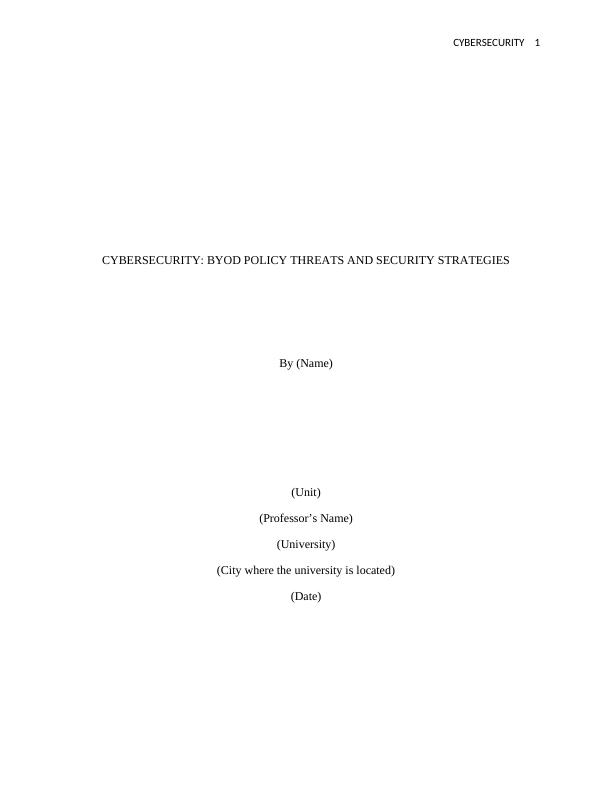BYOD Policy Threats and Security Strategies for Cybersecurity
Assess the risk from the BYOD policy to the university's information system and develop a security program to address the contemporary and emerging risks from cyber threats.
11 Pages2820 Words426 Views
Added on 2023-06-03
About This Document
This report analyzes the critical information assets of the university and discusses the threats caused by BYOD policy. It will also explore certificate-based authentication and provide spam handling instructions for the university.
BYOD Policy Threats and Security Strategies for Cybersecurity
Assess the risk from the BYOD policy to the university's information system and develop a security program to address the contemporary and emerging risks from cyber threats.
Added on 2023-06-03
ShareRelated Documents
End of preview
Want to access all the pages? Upload your documents or become a member.
Risk Assessment of Southern Cross University
|13
|2466
|317
BYOD Risk Assessment Task 1: Critical Components 2 2 Cyber Security Name of University Author
|15
|2429
|149
Why is cybersecurity important for the education sector?
|14
|3669
|11
Solutions of Cybersecurity Assignment
|9
|2005
|320
Cybersecurity Threats and Anti-Spam 3 CONCLUSIONS 4 INTRODUCTION Cybersecurity Threats and Anti-Spam 3 CONCLUSION 3 REFERENCES 4 INTRODUCTION Cybersecurity Threats and Anti-Spam 3 CONCLUSION 3 REFEREN
|7
|1670
|122
BYOD Policy Design for Southern Cross University
|8
|1829
|264




